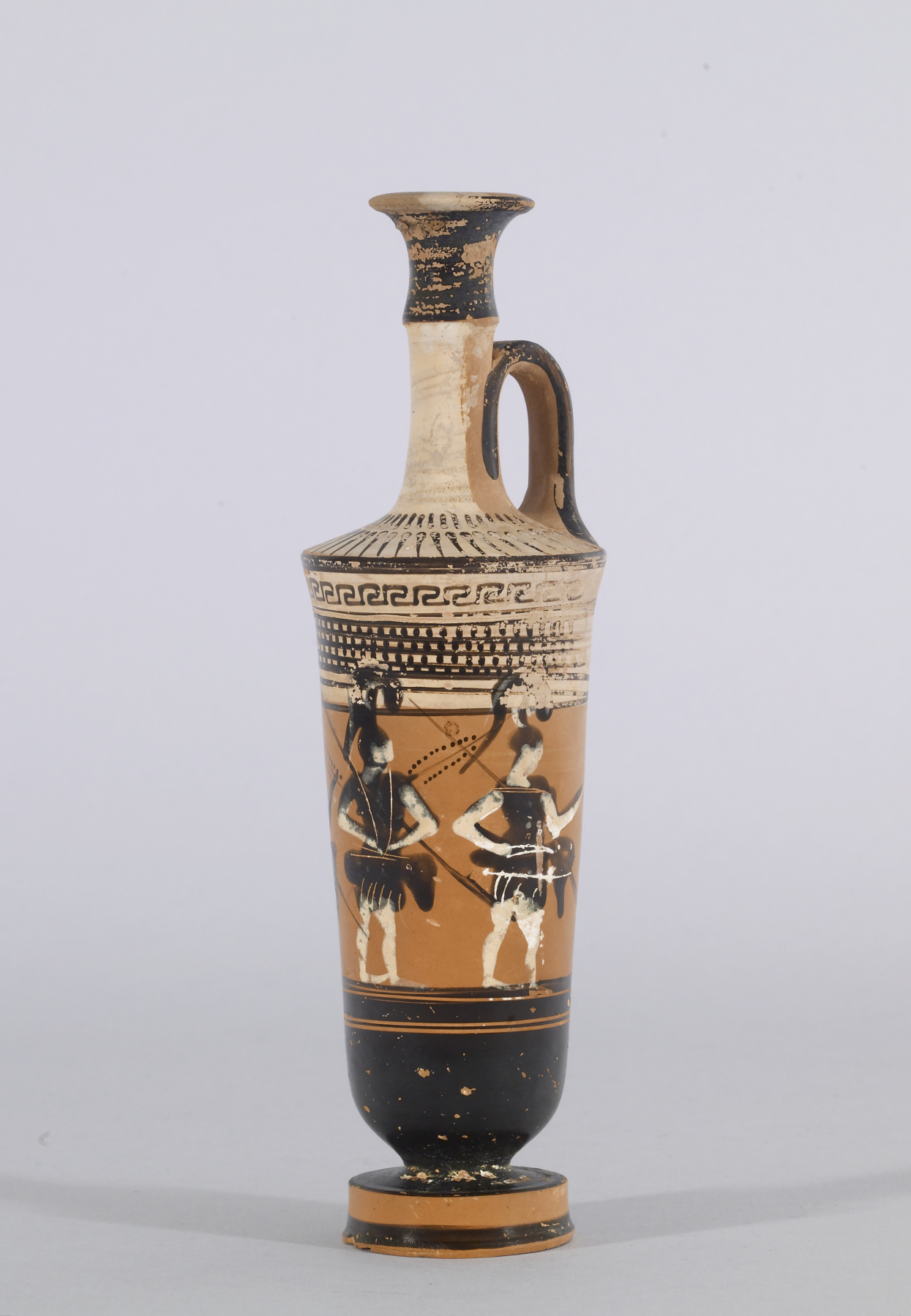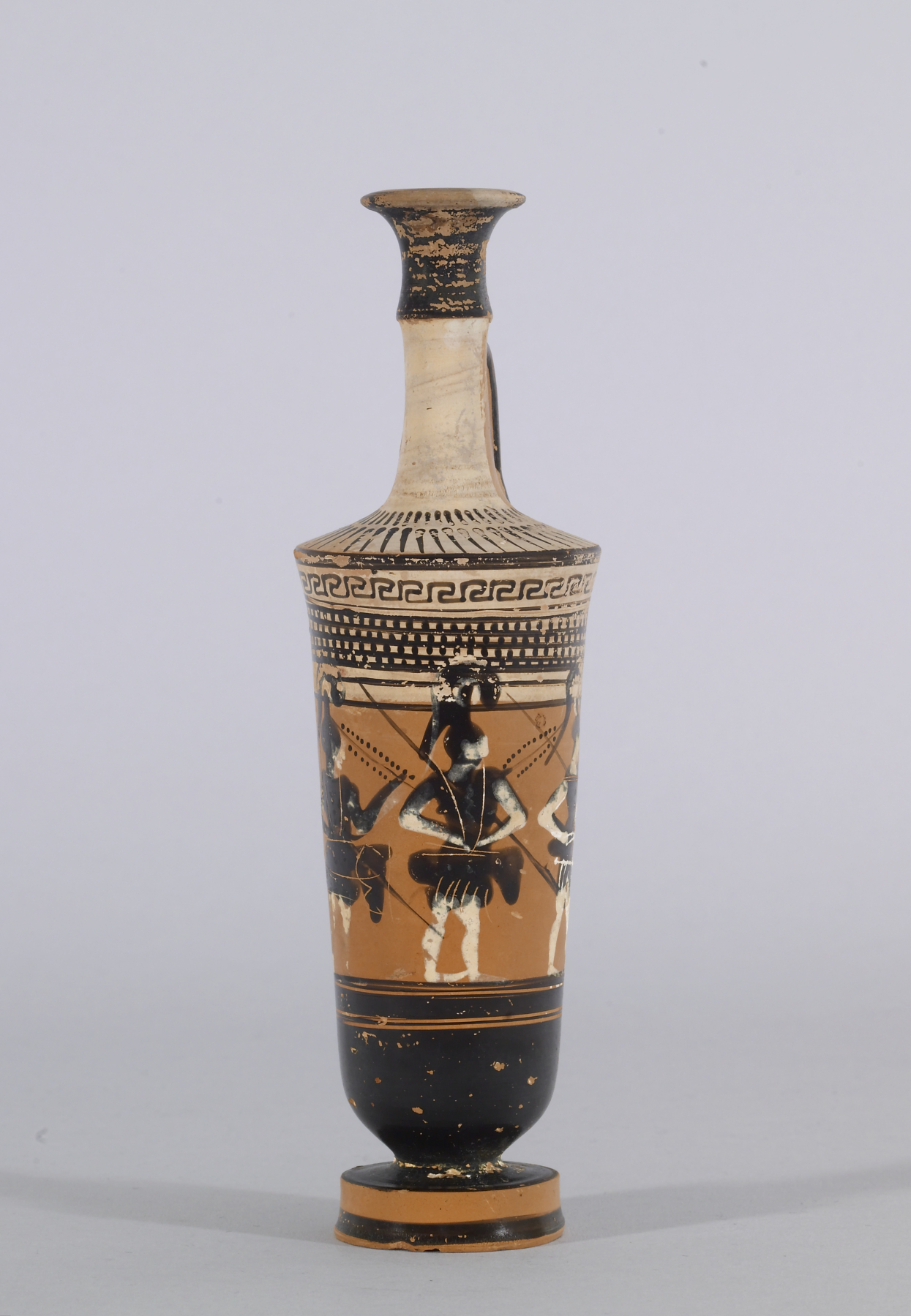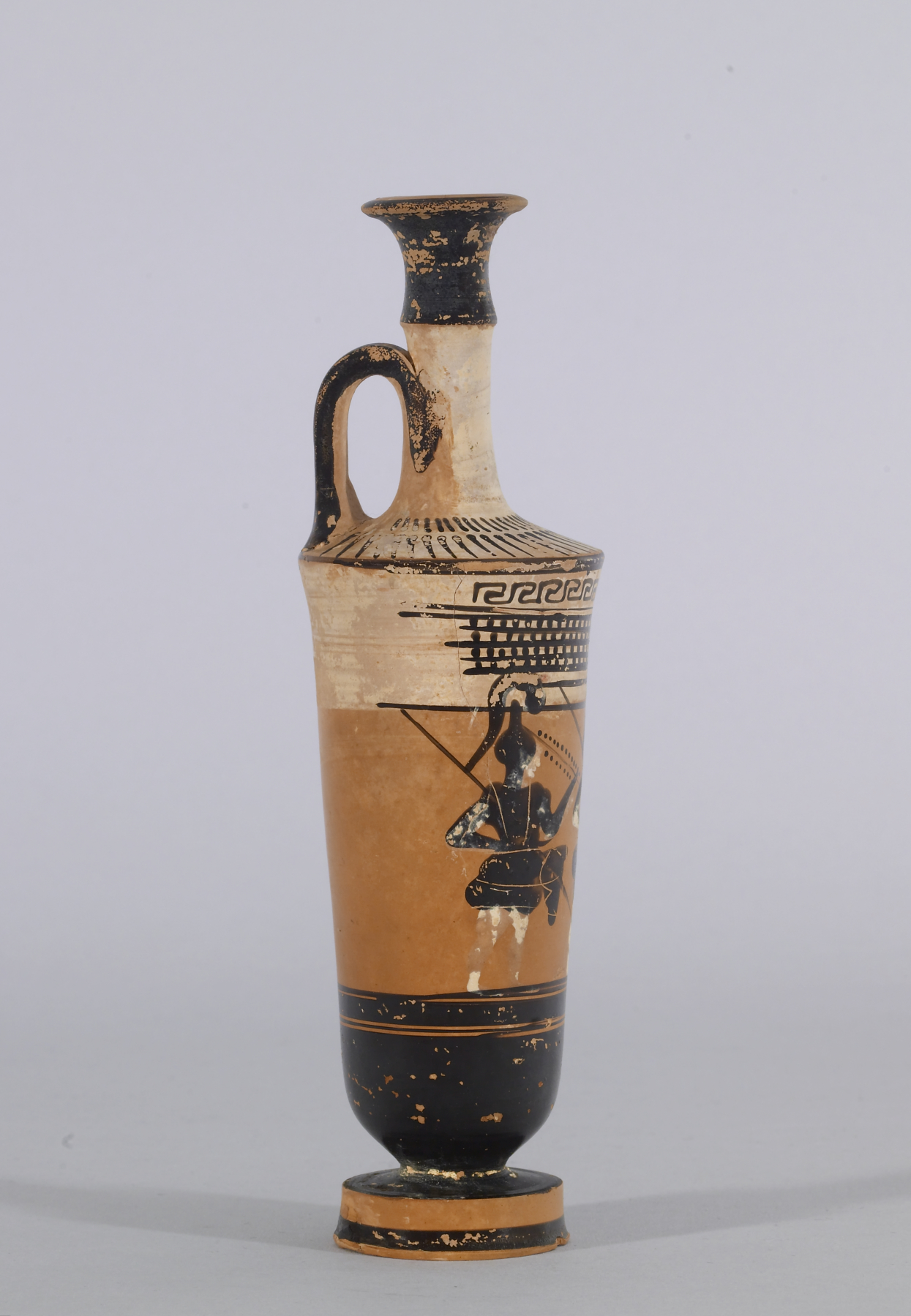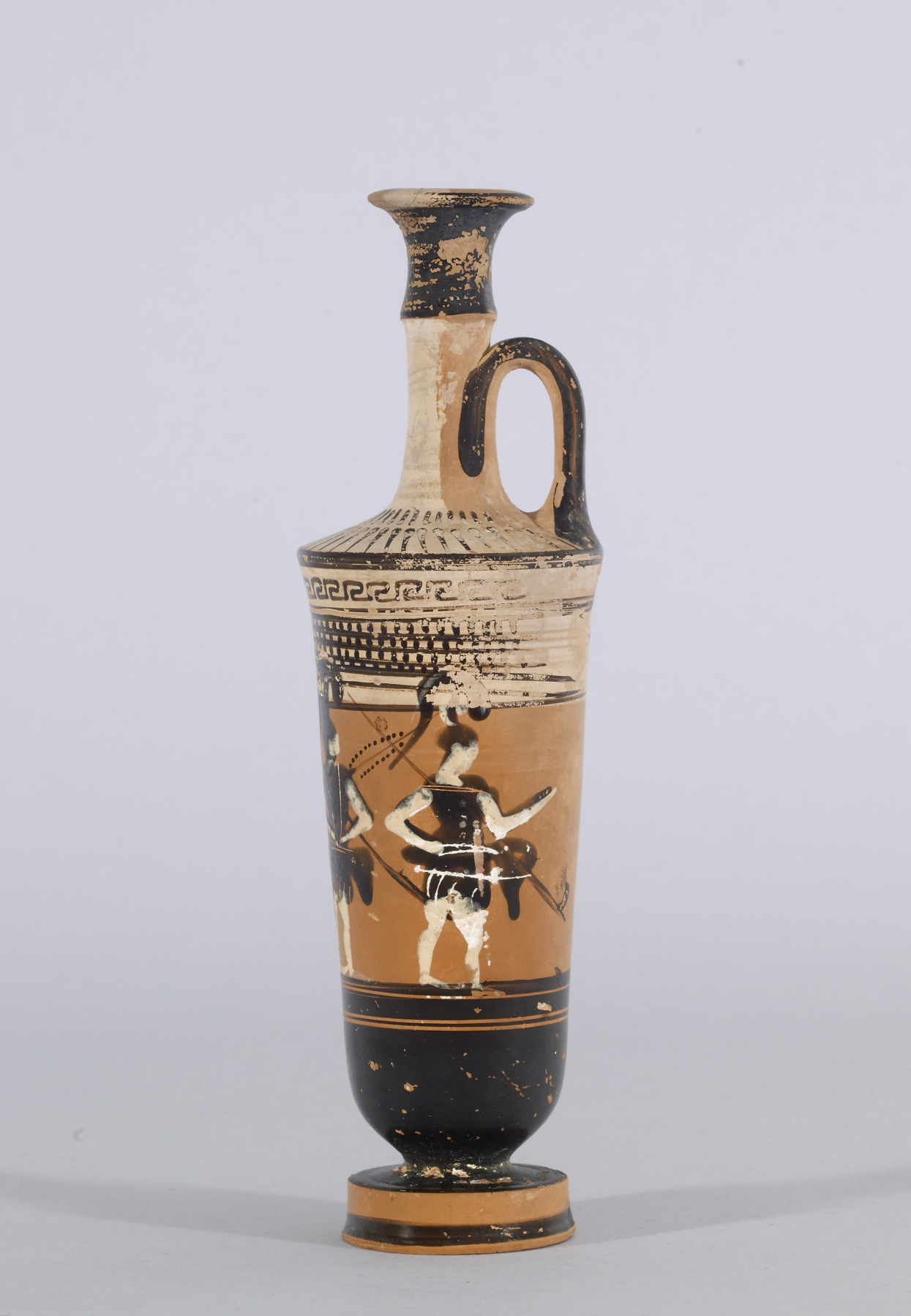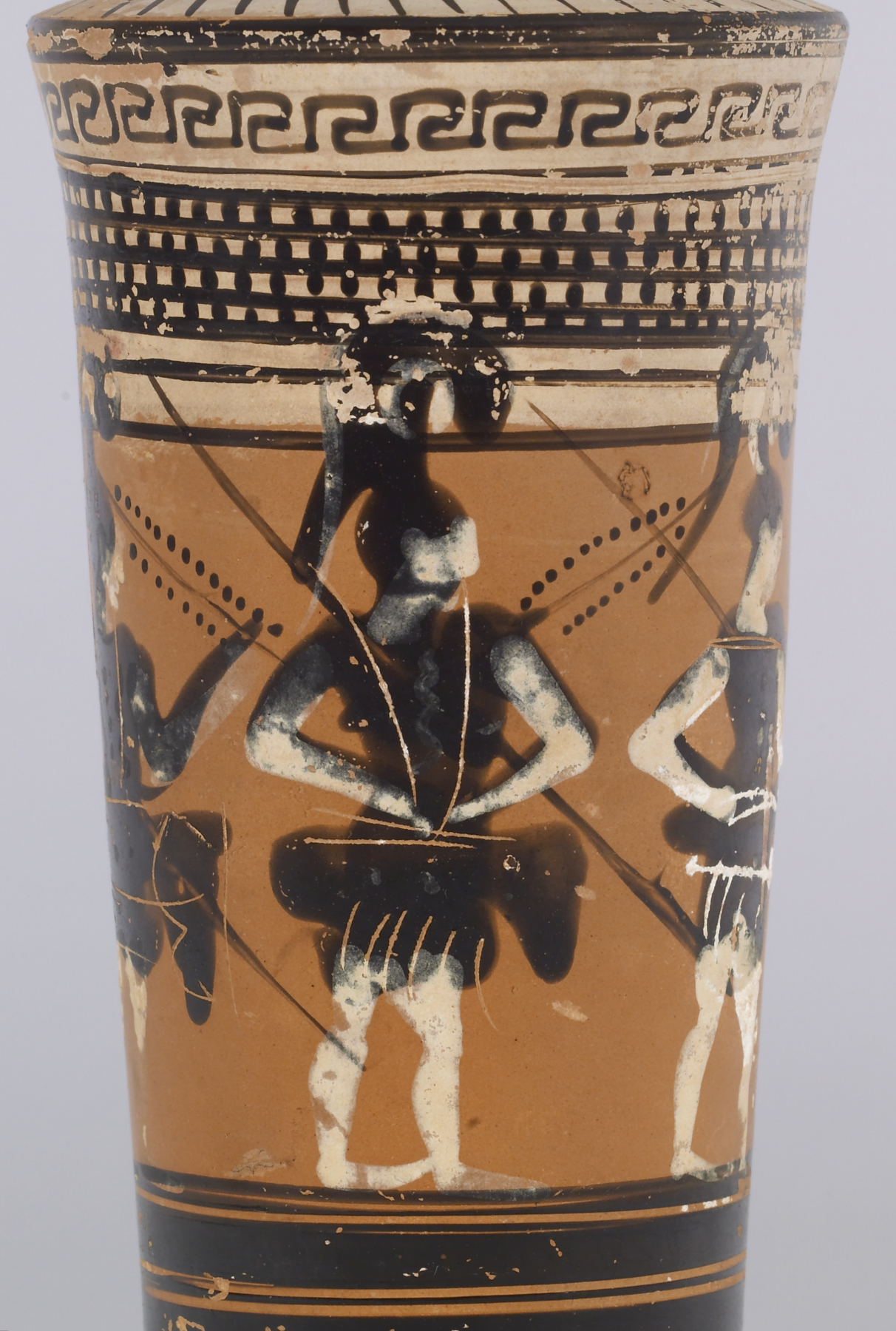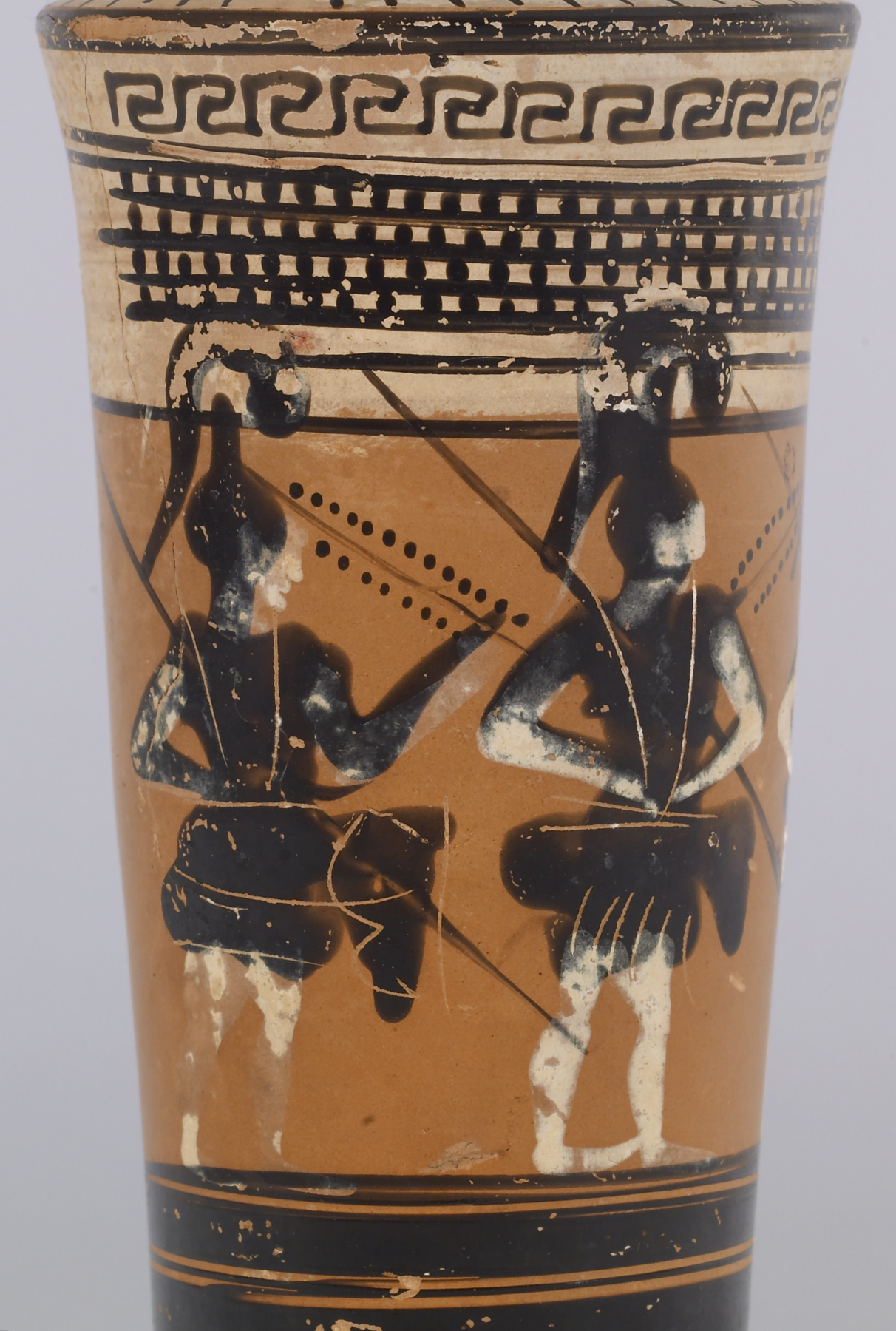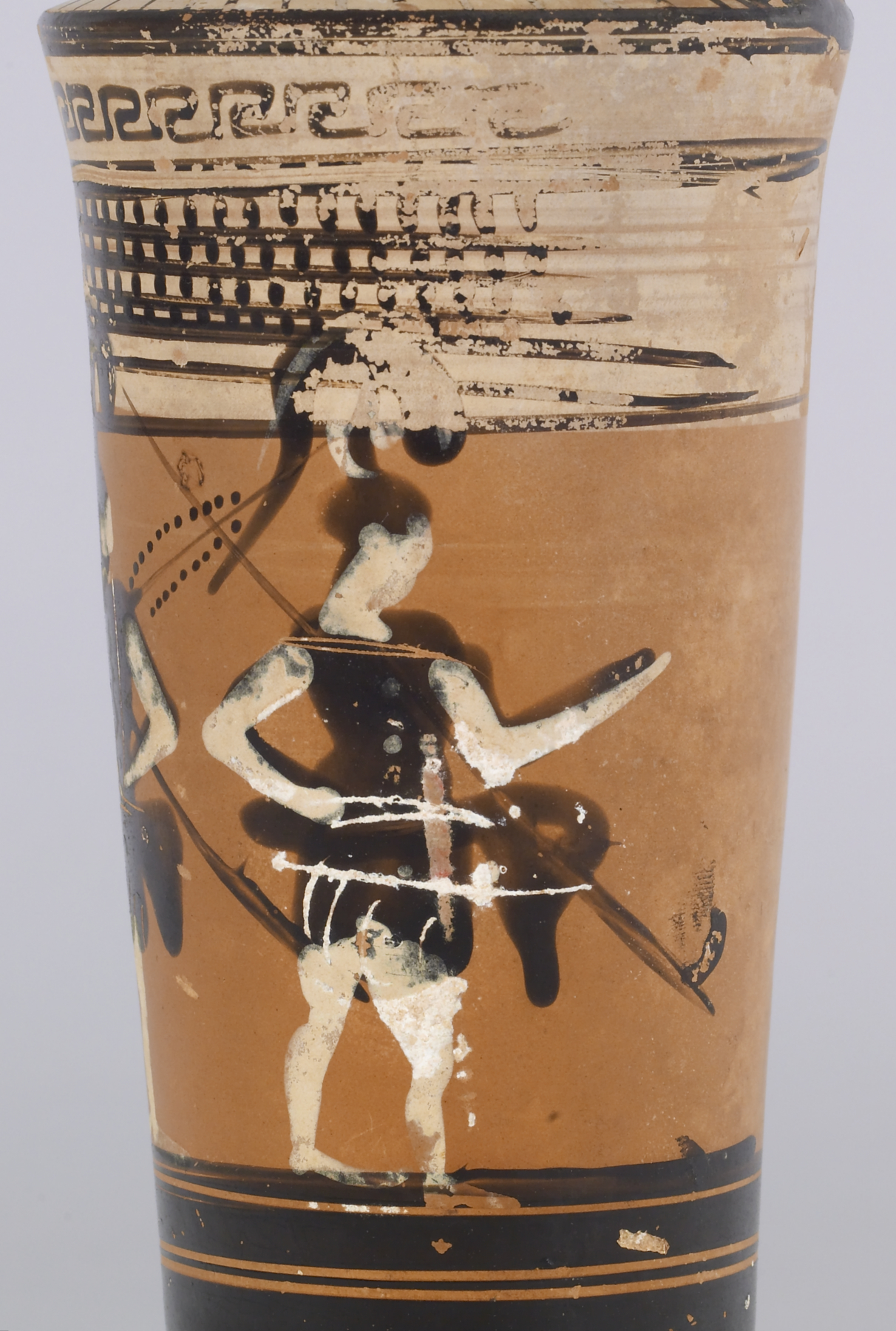Lekythos with Three Amazons
(Ancient Greece )
Three Amazons on this black-figure lekythos face right, and appear to march one after the other. Their skin is white, but their facial features, eroded or rubbed away, are indistinguishable. Each wears a helmet, holds a long spear and has a horizontal quiver. The middle figure holds both hands near her waist; the other two have one hand raised.
Amazons are first mentioned in the "Iliad" (6.186) as allies of the Trojans; later authors emphasize their fearlessness and their status as foreigners. They were introduced on Attic vases in the early 6th century BC, and quickly became a popular subject. Early black-figure depictions of Amazons resemble Greek warriors, with one notable difference-their white skin color, which identifies them as "women." In red-figure vases, the Amazons acquire more feminine features and bodies, and their foreigness is emphasized by their attire: Scythian or Thracian clothing and subsequently Persian garb.
In some places in Greece, Amazons were the object of cult. Jennifer Larson (1995, 111-16) has suggested that despite the fact that they were considered hostile to the Greeks, their complete otherness from the Greek way of life also gave them protective powers and entitled them to be worshiped as heroines.
Provenance
Provenance (from the French provenir, 'to come from/forth') is the chronology of the ownership, custody, or location of a historical object. Learn more about provenance at the Walters.
Joseph Brummer, New York [date and mode of acquisition unknown]; Henry Walters, Baltimore, 1924, by purchase; Walters Art Museum, 1931, by bequest.
Exhibitions
| 2009-2011 | Heroes: Mortals and Myths in Ancient Greece. The Walters Art Museum, Baltimore; Frist Center for the Visual Arts, Nashville; San Diego Museum Of Art, San Diego; Alexander S. Onassis Public Benefit Foundation (USA), New York. |
Conservation
| Date | Description | Narrative |
|---|---|---|
| 2/26/1974 | Treatment | reconstructed; loss compensation |
| 9/19/2007 | Treatment | technical analysis; stabilized; loss compensation |
| 2/3/2011 | Treatment | stabilized |
Geographies
Greece, Attica (Place of Origin)
Measurements
H: 8 1/16 x Diam: 2 3/8 in. (20.5 x 6 cm)
Credit Line
Acquired by Henry Walters, 1924
Location in Museum
Not on view
Accession Number
In libraries, galleries, museums, and archives, an accession number is a unique identifier assigned to each object in the collection.
In libraries, galleries, museums, and archives, an accession number is a unique identifier assigned to each object in the collection.
48.249


